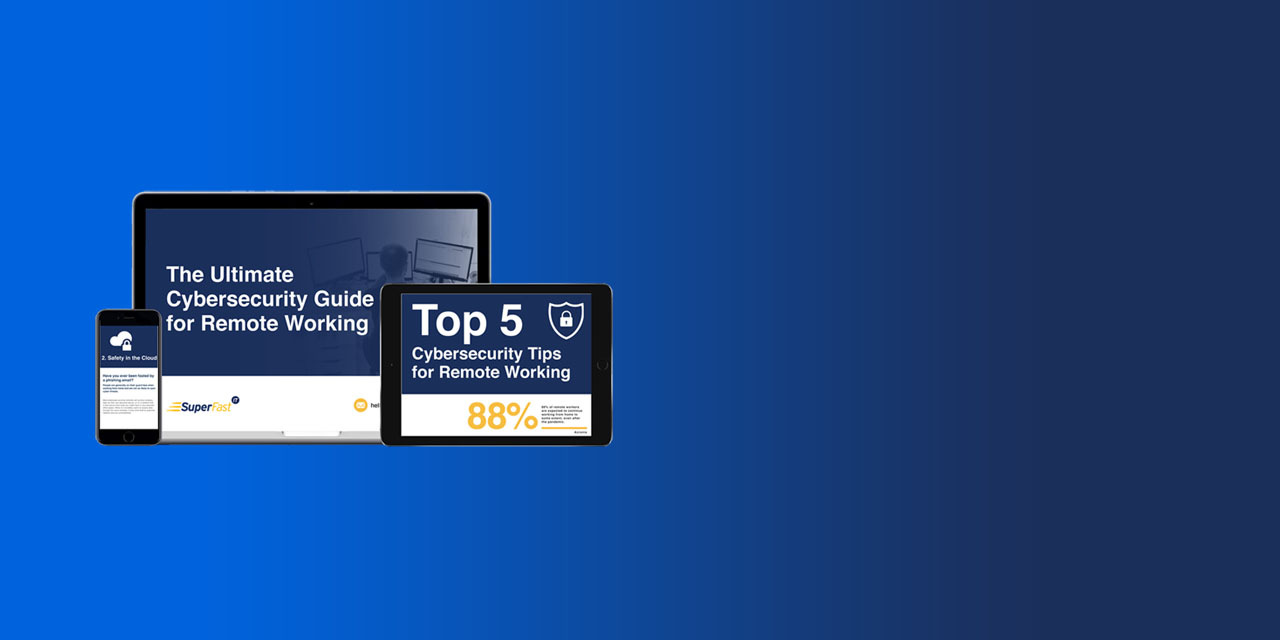Remote working: Managing cybersecurity risks in 9 steps
Photo credit: Writix During the first lockdown, our priority was to quickly facilitate working from home and keep business moving. We did this...
3 min read
James Cash 12-Nov-2020 15:14:34

Maintaining network security while employees work from home is a challenge. Work-from-anywhere is the new norm. COVID19 has drove us to embrace remote working and put the traditional in-office model on its head. But it has also created remote working cybersecurity risks.
This is a critical factor when keeping data secure. Bring Your Own Device (BYOD) is not a new issue, but is more relevant than ever. An employee using their own computer equipment is unlikely to have the right security controls in place.
I advice businesses to issue devices if possible, as they are much easier to manage and secure. You will also avoid legal and regulatory headaches, however, this is not always possible.
The secret is to find the long term solution. Do not be tempted put in short-term or interim fixes, as they often become the long term arrangement. The long term arrangement becomes an ongoing cybersecurity risk.
Mobile Device Management (MDM) tools allow IT administrators to monitor, manage and enforce security policies onto personal devices. They work by ensuring privately-owned devices meet certain security guidelines. For example, you may need the latest software update to gain access or to connect to company resources/data. MDM tools can also remove company data from the personal device should the employee leave the business.
Virtual desktop technology can facilitate and control access to data in applications such as CRM, Sage or MS Office. A virtual desktop provides seamless access to applications without any data actually being stored or transferred onto the user’s device. This is how it provides significantly high protection.
Windows PCs, Macs, laptops, iPhones, iPads, and Android mobile and tablet devices.
Mobile Device Management (MDM) and virtual desktops will provide the technology to keep data secure to a degree. However, people are usually the weakest link when it comes to data security.
Companies must be clear about an employees role. What are their individual responsibilities? Send them a copy of your security policy and remind them of their duties.
Educate staff using online user awareness training and assessment tools. Do this on an ongoing basis. This is cost effective, easy to monitor and easiest to implement while employees work from home.
Mobile Device Management (MDM), virtual desktops and online user awareness training are practical and affordable to business of all sizes. Cloud delivery allows them to access the technology without a large up-front investment, preserving vital cash reserves during the pandemic.

If you’re looking to make your business cyber safe, remember to lean on an expert and ask lots of questions. Book some time with me if you have any questions about remote working cybersecurity.
See our learning centre for more information and top tips about keeping your business cyber safe.

Photo credit: Writix During the first lockdown, our priority was to quickly facilitate working from home and keep business moving. We did this...

remote working cyber security Remote working is a standard practice amongst businesses today. The accelerated transition to hybrid working during the...

This week, there are some interesting lessons we can learn from the IT and security headlines. Learn from other businesses mistakes so you you don't...